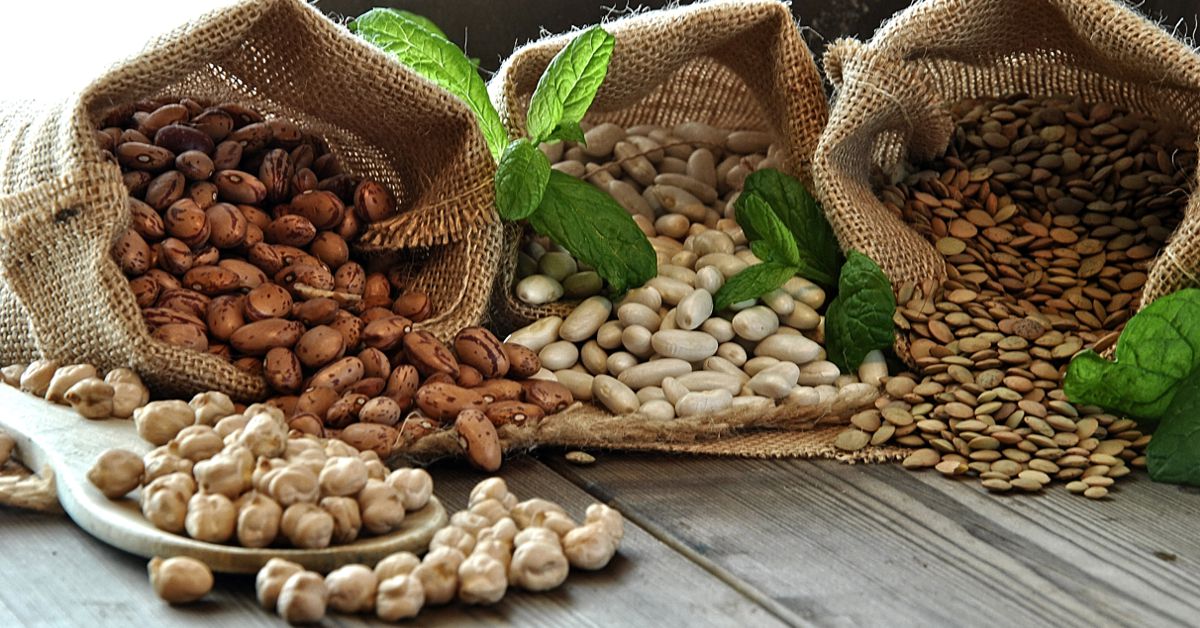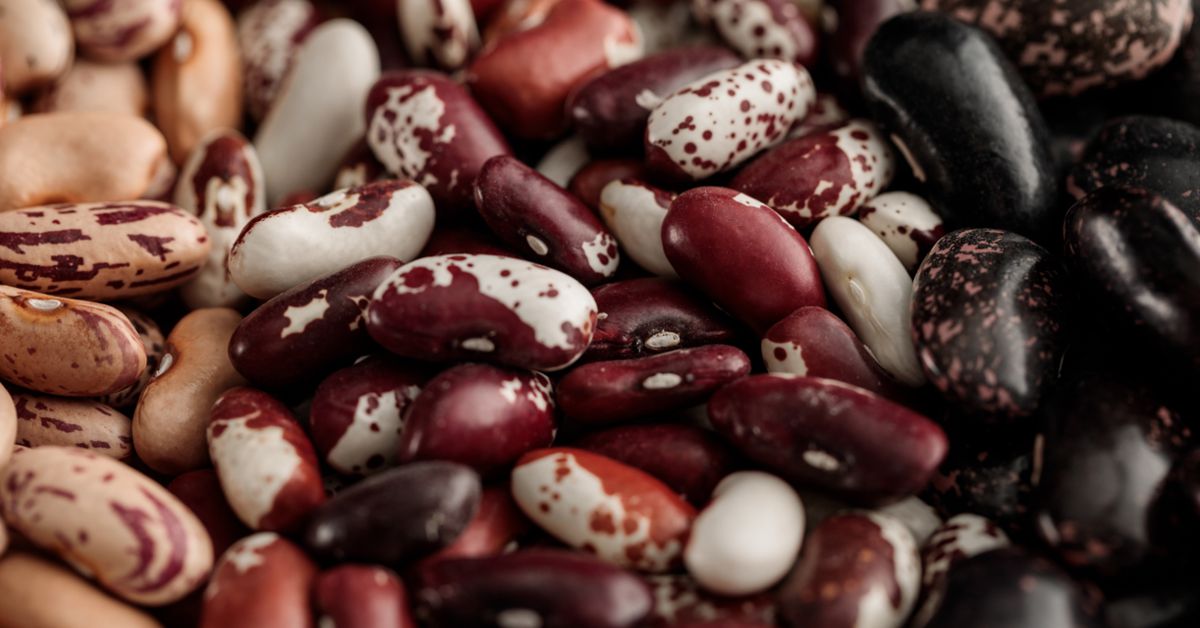Beans are a type of legume, which is a plant family that includes lentils, chickpeas, peanuts, and many other types of beans.
These plants are known for their ability to fix nitrogen in the soil, which makes them a great crop for sustainable agriculture.
They are also a good source of protein, fiber, and many other nutrients.
Type of Beans
Black beans are small, shiny beans with a delicate, slightly sweet flavor.
They are often used in Mexican and South American cuisine, and are a popular choice for making black bean soup, black bean burritos, and black bean salad.
They are high in protein and fiber, and are a good source of antioxidants.
Kidney beans are large, kidney-shaped beans with a soft, creamy texture.
They are often used in chili and red bean dishes, and are a popular choice for making vegetarian burgers.
They are high in protein and fiber, and are a good source of iron and potassium.
Pinto beans are small, speckled beans with a soft, slightly sweet flavor.
They are often used in Mexican and South American cuisine, and are a popular choice for making refried beans and bean dip.
They are high in protein and fiber, and are a good source of iron and potassium.
Navy beans are small, white beans with a delicate, slightly sweet flavor.
They are often used in soups and baked bean dishes, and are a popular choice for making navy bean soup.
They are high in protein and fiber, and are a good source of iron and potassium.
Lima beans are large, flat beans with a creamy, slightly sweet flavor.
They are often used in soups, stews, and casseroles, and are a popular choice for making lima bean dip.
They are high in protein and fiber, and are a good source of iron and potassium.
In addition to these common types of beans, there are many other types to choose from, such as adzuki beans, fava beans, garbanzo beans (chickpeas), and mung beans.
Each type has its own unique flavor and texture, and can be used in a variety of dishes.
Benefits and Nutrients of Beans
Eating beans has many health benefits. Here are just a few:
- High in protein: This legume is an excellent source of plant-based protein, which is essential for building and repairing tissues in the body.
They are also low in fat and calories, making them a healthy choice for those trying to manage their weight.
They are a great addition to any diet, and can be enjoyed in a variety of ways. - High in fiber: This legume is in both soluble and insoluble fiber. Soluble fiber can help to promote healthy digestion and prevent constipation.
It can also help to lower cholesterol levels, which can reduce the risk of heart disease.
Insoluble fiber is important for good digestive health, as it helps to keep things moving along smoothly. - Rich in nutrients: They are an excellent source of many essential nutrients, including iron, potassium, and folate.
They also contain antioxidants, which can help to protect the body against the damage caused by free radicals.
Antioxidants are substances that can prevent or delay cell damage by protecting cells from the damaging effects of oxidation.
Some studies have shown that eating beans regularly may help to reduce the risk of chronic diseases such as heart disease, diabetes, and certain types of cancer.
This may be due to the combination of nutrients and antioxidants found in beans, as well as their low fat and calorie content.
Recipes with Beans
Breakfast
Breakfast burritos: Start by heating up some black beans in a pan. Then, scramble some eggs and add them to the pan with the beans. Wrap the mixture in a tortilla, and top with diced tomatoes, shredded cheese, and avocado.
Overnight oats with beans: Mix together rolled oats, milk, Greek yogurt, kidney beans, and any other desired toppings (such as nuts, fruit, and honey) in a jar. Leave in the refrigerator overnight, and enjoy it in the morning.
Bean and egg breakfast bowls: Cook up some black beans and scrambled eggs, and serve over a bed of brown rice. Top with diced tomatoes, avocado, and hot sauce.
Bean and veggie breakfast scramble: Heat up a pan and add some chopped veggies (such as bell peppers, onions, and mushrooms). Once the veggies are cooked, add in some scrambled eggs and black beans. Top with diced onions, tomatoes, and avocado.
Lunch
Black bean quesadillas: Spread black beans on half of a tortilla, top with shredded cheese and diced veggies (such as bell peppers and onions), and fold the tortilla in half. Grill in a pan until the cheese is melted and the tortilla is crispy.
Lentil soup: Saute diced onions, carrots, and celery in a pot until they are tender. Add in lentils, diced tomatoes, and broth, and simmer until the lentils are cooked through. Season with your favorite herbs and spices.
Chickpea salad sandwich: Mash chickpeas with a fork and mix in diced veggies (such as tomatoes, cucumbers, and onions), as well as your favorite herbs and spices. Spread the mixture on bread and top with lettuce and avocado.
Vegetarian chili: Saute diced onions, peppers, and zucchini in a pot until they are tender. Add in canned tomatoes, kidney beans, and any other desired veggies (such as corn and bell peppers). Simmer until the vegetables are tender, and season with chili powder, cumin, and other desired spices.
Hummus and veggie wrap: Spread hummus on a wrap, and top with sliced veggies (such as cucumbers, bell peppers, and carrots). Roll up the wrap and enjoy.

Dinner
Baked beans and BBQ chicken: Marinate chicken breasts in your favorite BBQ sauce, and bake in the oven until cooked through. Serve the chicken with a side of baked beans.
Black bean and sweet potato tacos: Mash roasted sweet potatoes and black beans together, and fill soft taco shells with the mixture. Top with diced onions, tomatoes, and avocado.
Vegetarian lasagna with white beans: Spread a layer of cooked lasagna noodles in the bottom of a baking dish. Top with a layer of mashed white beans, diced veggies (such as zucchini and bell peppers), and shredded cheese. Repeat the layers until you have used all the ingredients, and bake in the oven until the cheese is melted and the lasagna is heated through.
Black bean and corn salad: Mix together cooked black beans, corn, diced tomatoes, and diced onions in a bowl. Season with your favorite herbs and spices, and serve over a bed of lettuce or with tortilla chips.
Chili con carne: Saute diced onions, peppers, and ground beef in a pot until the beef is cooked through. Add in canned tomatoes, kidney beans, and any other desired veggies (such as corn and bell peppers). Simmer until the vegetables are tender, and season with chili powder, cumin, and other desired spices.
Extra Benefits
In addition to the health benefits mentioned above, there are many other reasons to include this legume in your diet. Here are a few extra benefits:
They are budget-friendly: This legume is an inexpensive source of protein and nutrients, making them a great choice for those on a budget.
They are also a good source of fiber, which can help to regulate digestion. Additionally, beans contain antioxidants and phytochemicals that can promote overall health.
They are versatile: The humble bean is a versatile ingredient that can be used in a wide variety of dishes, from hearty soups and stews to refreshing salads and dips.
Whether you're cooking for a crowd or just for yourself, beans are a great way to add flavor, protein, and fiber to your meal.
They are easy to prepare: Many different types are available in canned form, making them quick and easy to use in recipes.
Dried beans can also be easily cooked in a pressure cooker or slow cooker.
This provides a convenient option for those who want to enjoy their benefits without having to go through the hassle of cooking them from scratch.
They are good for the environment: They are a great crop for sustainable agriculture because they can fix nitrogen in the soil.
This means that they can help to improve soil quality, reduce the need for synthetic fertilizers, and lower the carbon footprint of agriculture.
By adding them to your agricultural rotation, you can improve the fertility of your soil without resorting to harmful chemicals.
Furthermore, they require less energy and water to grow than many other crops, making them an environmentally-friendly choice.
Extra bean-efits - Of our website
Thanks for reading! Don't forget to save our site in your bookmarks and share it if you found the information helpful.
Check out our section on Nutrition for more articles just like this one.

Leave A Comment